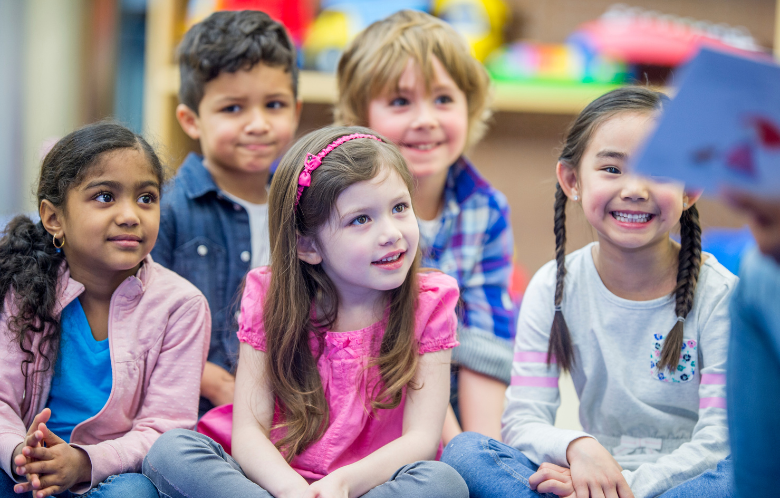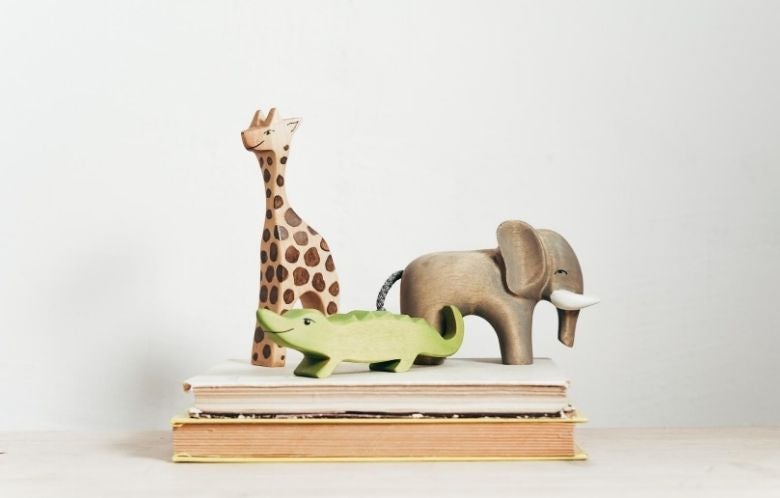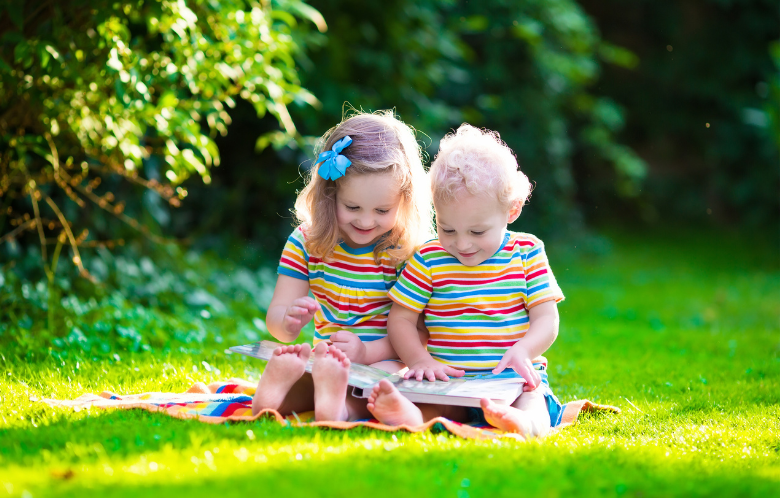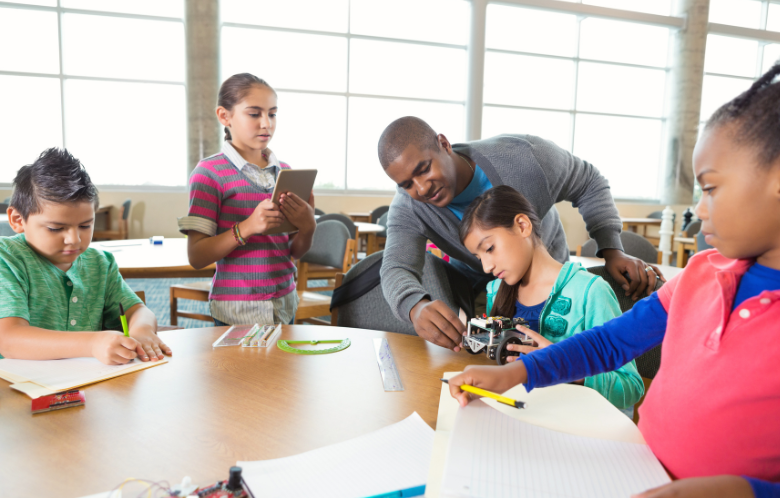Putting together a good storytime is kind of like planning the perfect meal. You need balance, variety, and the best ingredients you can find. Here are some ways you can cook up a storytime for any day of the week.
Main ingredient: Books
Books are the main ingredient in any storytime. And you want your storytime kiddos clambering for seconds, not shoving their plates away in disgust.
The best storytime books delight young readers and caregivers alike while introducing new vocabulary, offering opportunities for discussion and questions, and allowing children to connect what’s happening in the story to their world. They will also provide both windows and mirrors for participants with joyful narratives that celebrate all kinds of diversity.
Beyond that, storytime picks must work well for group sharing and the age of the participants. Just like I would never put cheddar cheese on my pizza, there are some books I love that simply don’t work well to read aloud to babies.
How do you balance all these different nutritional needs? What’s the best way to find great storytime books?
-
Ask your coworkers or other children’s staff. They’re sure to have some tried and true favorites or secret go-to titles. Most likely they will be more than happy to share tips, resources, and sample storytimes with you.
-
Read as many picture books as you can. Are there some that made you laugh out loud? Any that made you go, “awww”? Those books are likely to elicit similar emotions in storytime participants and can make great choices.
-
Use your resources. “Best of” lists, reviews, blogs, and book sites can all be great places to find titles.
-
Use NoveList Plus! We know storytime books and have tons of ways you can use our appeals, themes, lists, and more to find perfect titles to share. Check out 8 storytime tips for the uninitiated or Other duties as assigned: Storytime for tips and ideas.
-
If you need to refresh or purchase more books to round out your picture book or storytime collection, Core Collections can help. From recommendation levels to grade levels, award information, and reviews, Core Collections gives you everything you need in one place to support your ongoing collection development needs, making it easy to keep your picture book collection fresh.
-
Test them out! Sometimes you just can’t tell until you have an audience. Some books I thought would be huge hits ended up falling flat. Other books that I wasn't sure of got an amazing response. And that’s fine! If you share a book that doesn’t work, you don’t have to read it at storytime again. You’ll find your storytimes are always evolving and changing.
Depending on the age of your audience, you’ll need multiple titles per storytime. How do you combine your ingredients, aka books, in a way that’s flavorful and makes sense?
-
To theme or not to theme: That is the question. I won’t pretend there’s one right answer. I’ve planned storytimes both ways myself but I will offer you this advice: Choose your books first, not your theme. Why? You don’t want to decide to do a storytime on beach balls or sunflowers only to discover the books you have available aren’t quite right for your age group. Sometimes a book is great for one-on-one reading but doesn’t work well as a read-aloud. This took me years to fully understand and appreciate, but once I did, my storytimes got so much better.
-
I recommend you request and read many more books than you plan to share. Then you can carefully choose which of those books fit your style and your audience. Often, you’ll see themes naturally emerge (if you decide to theme) and may be surprised at the creative ways you can combine stories beyond the basics!
Appetizers and side dishes
While books may be the main ingredient, they do not make up a full meal… I mean storytime. Depending on the type of storytime you plan, you’ll want to include additional activities that support early literacy skills. Activities like music, rhymes, and manipulatives also help provide variety, allow kids to get their wiggles out, and keep their attention.
-
Whether you use recorded music or sing yourself, music is a great way to help children develop early literacy skills. Songs help children slow down language and hear the different parts of words, an important pre-reading skill. Songs can also teach new vocabulary.
-
Fingerplays, rhymes, and other movement activities help develop fine and gross motor skills as well as introduce and reinforce new words. For example, opening and closing your hands or arms while signing open/shut them reinforces the meaning of the words with actions.
-
Scarves, bells, shakers, or other manipulatives all add an extra layer of fun and learning to storytime. This is also a natural way of involving caregivers. Hand the grown-ups in attendance a shaker as well and encourage them to join in!
-
I always liked to end my storytimes the same way each week. Usually, that was a goodbye song or rhyme followed by an activity. Whether that was by blowing bubbles as kids left, or by giving each child a handstamp when I said goodbye. Repetition helps children know storytime is over and transition to their next activity.
Dessert
Want to end your storytime with a sweet little something extra? Extend the learning beyond storytime with these easy ideas:
-
Use the books you reviewed and liked, but didn’t share, to create a display at your program. Providing librarian-recommended titles makes it easy for caregivers to continue storytime at home.
-
If your library subscribes to LibraryAware, use the templates found there to quickly make a display poster or a bookmark with more titles to check out.
-
LibraryAware also makes it easy to email participants afterward. You can share the books you read, a list of read-alikes, early literacy tips, or create a storytime-specific newsletter as the County of Brant Public Library did.
Enjoy!
By choosing top-quality books and balancing your storytime with a mix of songs, rhymes, and activities, everyone is sure to have their fill of fun and learning.
Lauren Campbell is a NoveList Librarian. She’s currently reading The Familiar by Leigh Bardugo.



